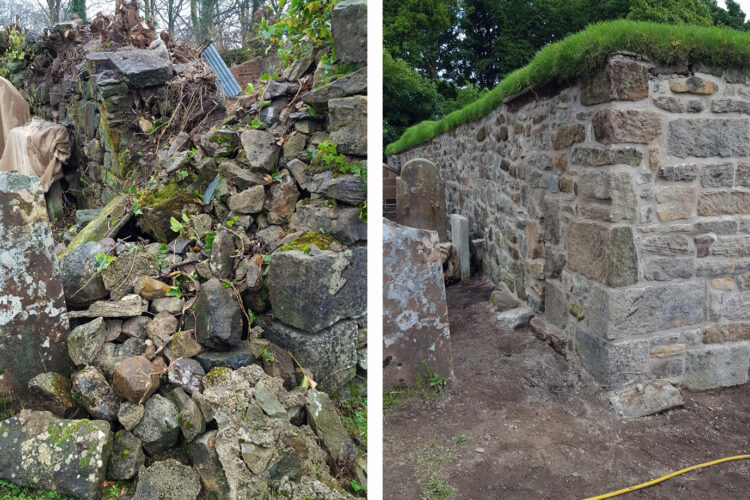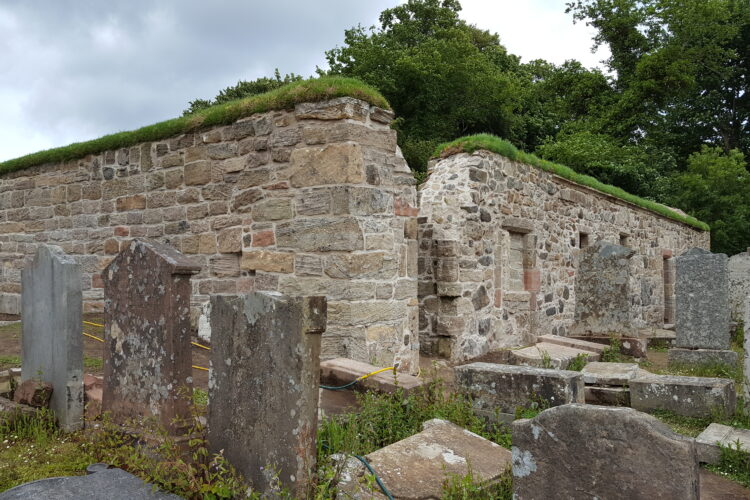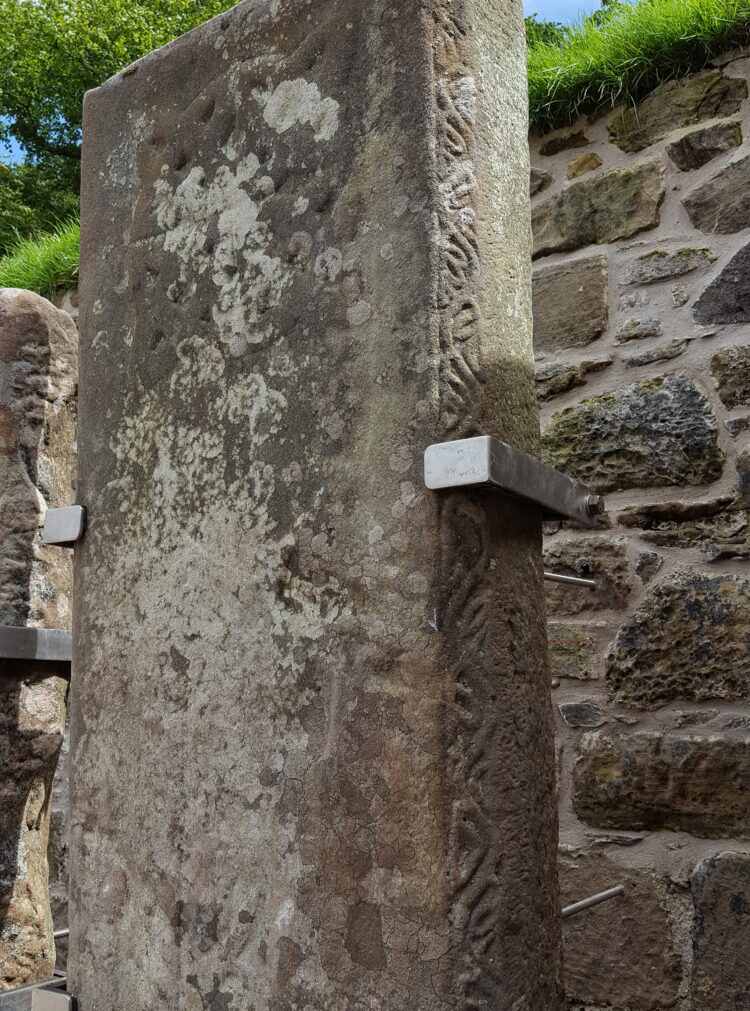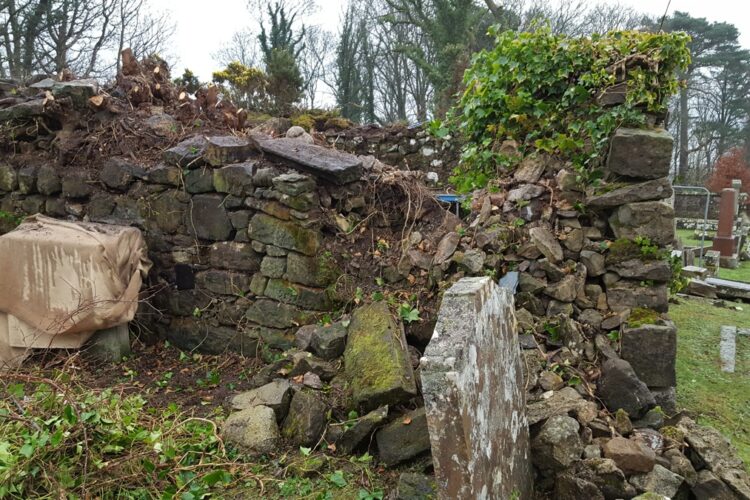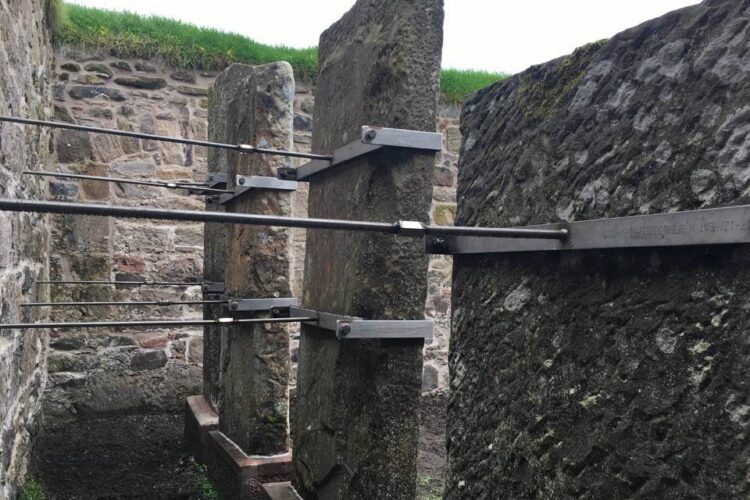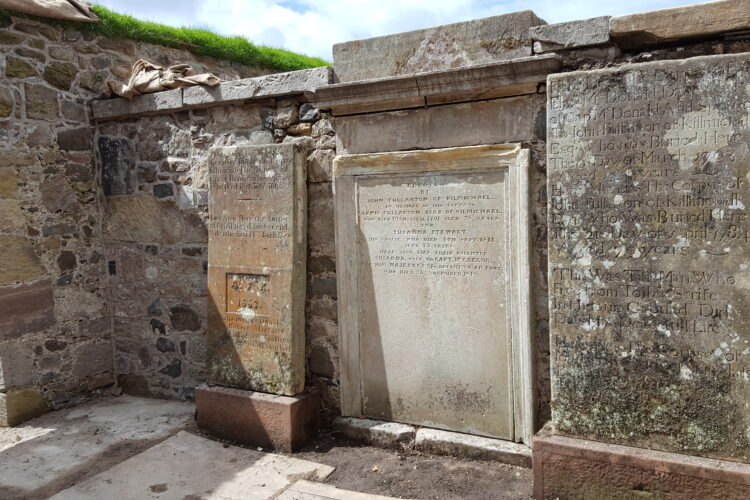St. Bride’s Chapel is a significant 14th century structure situated in Lamlash on the south-east of Arran. It is of national importance as the only medieval church on the island known to preserve above-ground remains. Following the construction of a new chapel in Lamlash in 1773 it was then used as a mausoleum by senior estate workers attached to the Duke of Hamilton’s Arran Estates.
Extensive vegetation had established and overwhelmed the remaining structure with ivy and sycamore trees threatening to destabilise large areas of masonry walling, some of which had already partial collapsed, and historic fabric lost.
Local interested parties formed an action group and we worked with the local community together with Historic Environment Scotland to develop a comprehensive scheme of repairs following the preparation of extensive surveys and detailed reports.
Repair works consisted of careful vegetation removal, masonry repairs, lime mortar pointing, wallhead consolidation by means of rough racking & soft topping, structural stabilisation works, reconstruction of fallen elements using historical photographs, repairs to memorials and grave stones, together with the removal of inappropriate later elements and materials, including ferrous fixtures and fittings.
Following careful analysis of the original mortar, five different lime mixes were developed with the Scottish Lime Centre Trust for re-pointing, rebuilding, rough-racking, grouting and re-bedding of cornice stones.
Within the east chamber, four significant standing stones were sensitively restored and, under our regular inspection and instruction, together with that of Historic Environment Scotland and the structural engineer, sensitive conservation works were carried out to re-orientate and secure these in their correct position.
The design team included a team of archaeologists, with whom we worked closely, to prepare the statement of significance and phasing drawings illustrating the six identified within the fabric of the structure. From this information the Written Scheme of Investigations was developed, and the restoration works carried out under a careful watching brief.
The sensitive repairs now protect the chapel from further loss of historic fabric, which has been welcomed by the action group, with the Historic Environment Scotland senior casework officer reporting:
Congratulations to you and the project team for a great job on behalf of North Ayrshire Council, we have already had positive feedback from the community.
